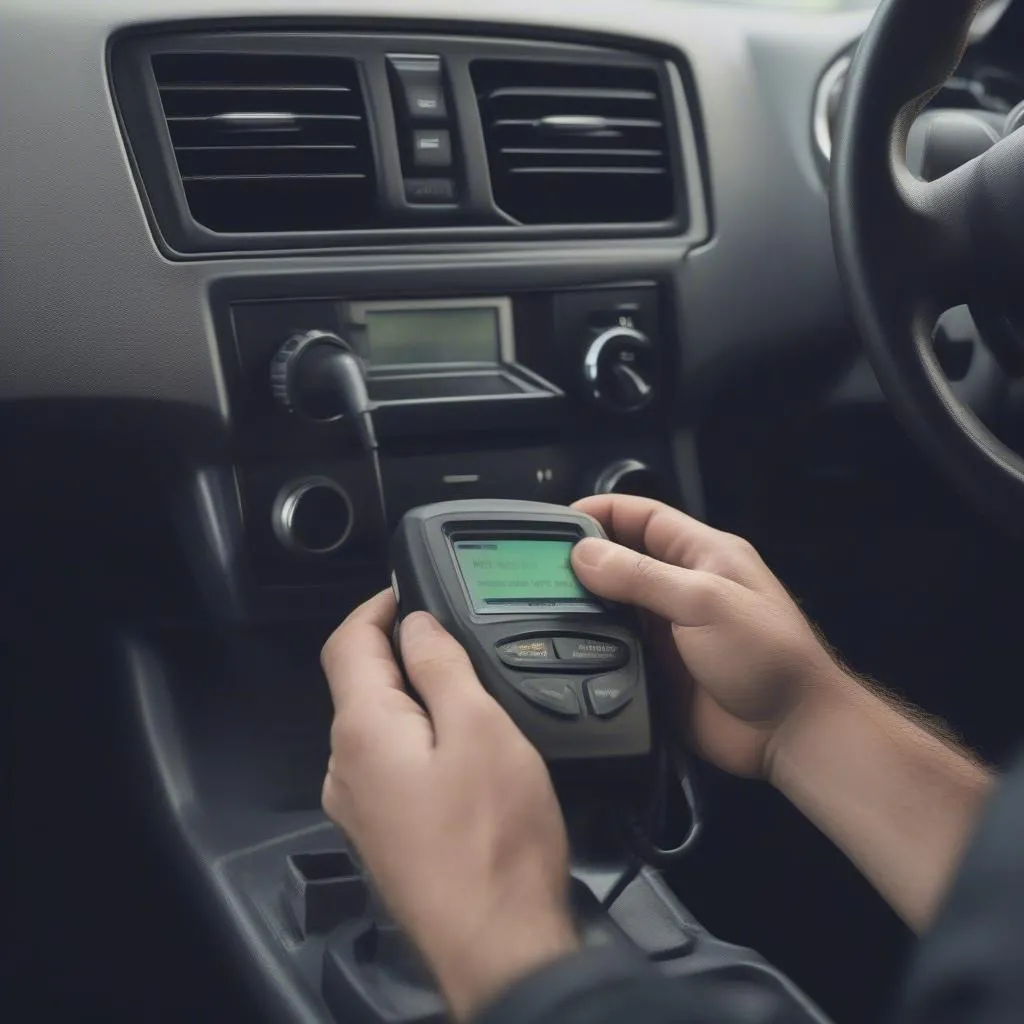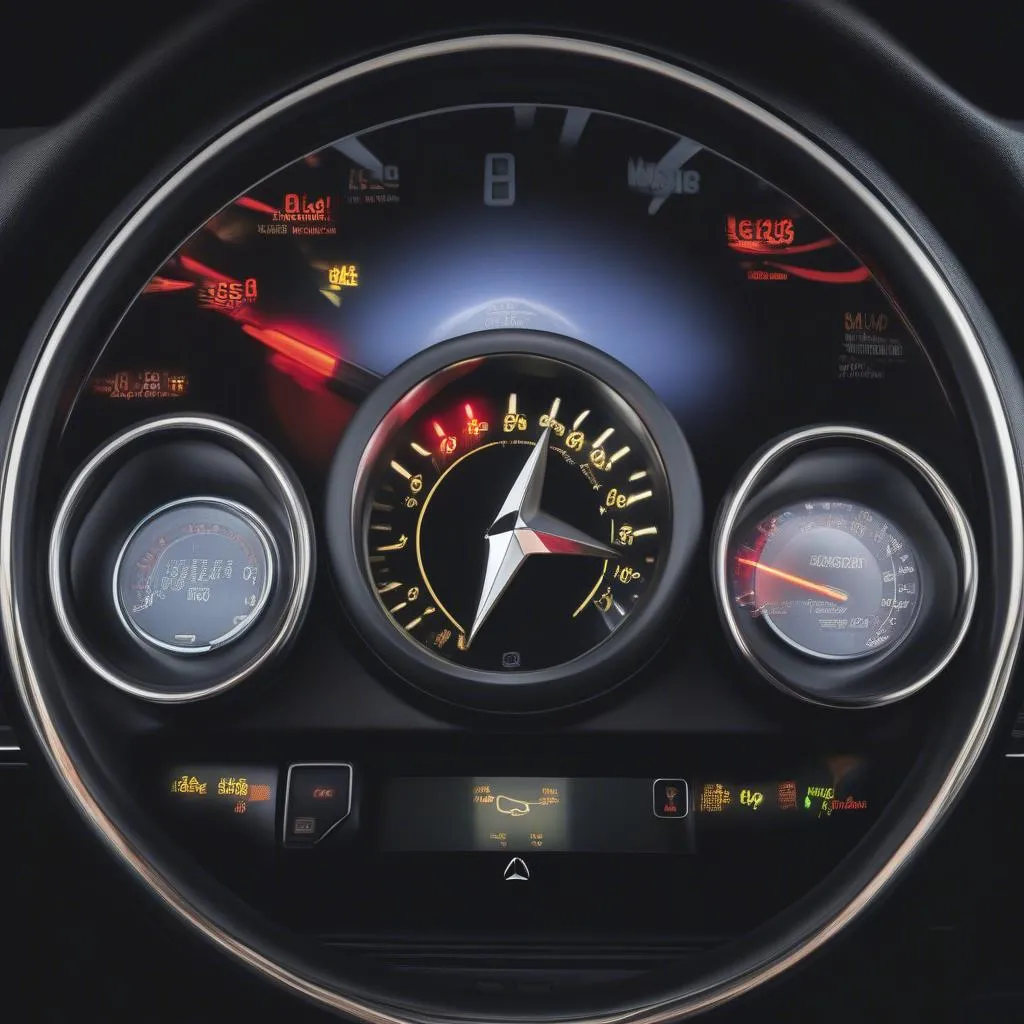The Electronic Stability Program (ESP) is a crucial safety feature in your Mercedes, designed to help you maintain control during challenging driving situations. When you see an “ESP Malfunction” warning on your dashboard, it’s signaling a potential problem with this system. While it might seem daunting, understanding how to approach this issue can save you time, money, and potential headaches down the road.
This article will guide you through the common causes of ESP malfunctions in Mercedes vehicles, symptoms to look out for, and provide a simplified approach to troubleshooting and potentially fixing the issue.
Understanding ESP Malfunction: What’s Going On?
Before diving into solutions, it’s helpful to understand what might be triggering that “ESP Malfunction” light. Here are some common culprits:
- Faulty Steering Angle Sensor: This sensor tells the ESP system how much your steering wheel is turned. If it’s sending incorrect signals, the system can get confused.
- Brake Light Switch Issues: Beyond controlling your brake lights, this switch also plays a role in engaging your ESP. A malfunctioning switch can disrupt the entire system.
- Wheel Speed Sensor Problems: These sensors monitor the rotational speed of each wheel. If one sensor sends faulty data, the ESP might misinterpret it as a loss of traction.
- Issues with the ABS Control Module: As the ESP is intricately linked to your Anti-lock Braking System (ABS), problems with the ABS control module can directly impact ESP functionality.
- Software Glitches: Like any computer system, your car’s software can sometimes experience minor glitches that trigger warning lights.
Recognizing the Signs: Is It Really an ESP Problem?
Apart from the obvious “ESP Malfunction” message, other symptoms might indicate an issue with your Mercedes’ ESP:
- ESP Warning Light Flashing: This usually happens when the system is actively intervening to correct stability. If it’s flashing persistently, there might be a problem.
- Traction Control Issues: Since ESP often works in tandem with traction control, you might experience wheel spin or difficulty accelerating on slippery surfaces.
- ABS Activation Without Braking: If you feel the ABS engaging when you’re not even braking, it could be a sign of a faulty wheel speed sensor, impacting both systems.
Gearing Up for a Fix: What You’ll Need
- OBD-II Scanner: This handy tool allows you to read and understand the error codes stored in your Mercedes’ computer system, pointing you in the right direction for repairs.
- Repair Manual: While we’ll provide guidance, having a repair manual specific to your Mercedes model will offer invaluable information and diagrams.
- Basic Tools: A socket set, screwdrivers, and possibly a multimeter might be needed depending on the specific issue.
Troubleshooting and Fixing the ESP Malfunction
1. Read the Error Codes: Connect your OBD-II scanner to the designated port under your dashboard (usually on the driver’s side). Turn the ignition to the “on” position (without starting the engine) and follow the scanner’s instructions to read the codes.
2. Research the Codes: Note down the specific codes displayed on your scanner. You can then search online or consult your repair manual to understand what each code signifies and the potential causes.
3. Address the Underlying Issue: Based on the error codes and your research, you can start addressing the root cause:
- Faulty Sensors: If a faulty steering angle sensor or wheel speed sensor is the culprit, you’ll likely need to replace it.
- Brake Light Switch Replacement: Replacing this switch is a relatively straightforward procedure that can often resolve ESP issues.
- ABS Control Module Inspection: Issues with this module often require professional diagnosis and repair.
- Software Updates: For software-related glitches, a trip to a Mercedes dealership or a qualified mechanic with access to software updates might be necessary.
4. Clear the Codes and Test Drive: After addressing the suspected issue, use your OBD-II scanner to clear the error codes. Then, take your Mercedes for a cautious test drive to see if the ESP malfunction light stays off and the system functions correctly.
 OBD-II Scanner plugged into a car's port
OBD-II Scanner plugged into a car's port
FAQs: Addressing Common ESP Concerns
Q: Can I still drive my Mercedes with an ESP malfunction?
A: While technically possible, it’s not recommended. A malfunctioning ESP can compromise your safety, especially in situations that require stability control.
Q: Are ESP malfunctions expensive to fix?
A: The cost can vary greatly depending on the underlying cause. Simple fixes like a brake light switch replacement can be relatively inexpensive, while issues with the ABS control module can be more costly.
Q: How often does the ESP system need to be serviced?
A: There’s no set service interval for the ESP system itself. However, regular vehicle maintenance that includes inspecting brakes, tires, and electronic systems can help prevent potential issues.
Cardiagtech Can Help
For those seeking professional-grade automotive diagnostic tools and resources, CARDIAGTECH offers a range of products to empower car owners and mechanics alike. Visit their website at https://cardiagtech.com/ to explore their offerings.
 Mechanic inspecting a car's undercarriage
Mechanic inspecting a car's undercarriage
In Conclusion: Prioritizing Your Safety
Addressing an ESP malfunction in your Mercedes is essential for your safety and the optimal performance of your vehicle. By understanding the system, recognizing the symptoms, and following a systematic troubleshooting approach, you can get to the root of the problem and potentially fix it.
Remember, if you’re unsure about any step of the process or lack experience working on car electronics, it’s always best to consult a qualified Mercedes mechanic. They have the expertise and specialized tools to diagnose and repair complex electronic systems safely and effectively.


